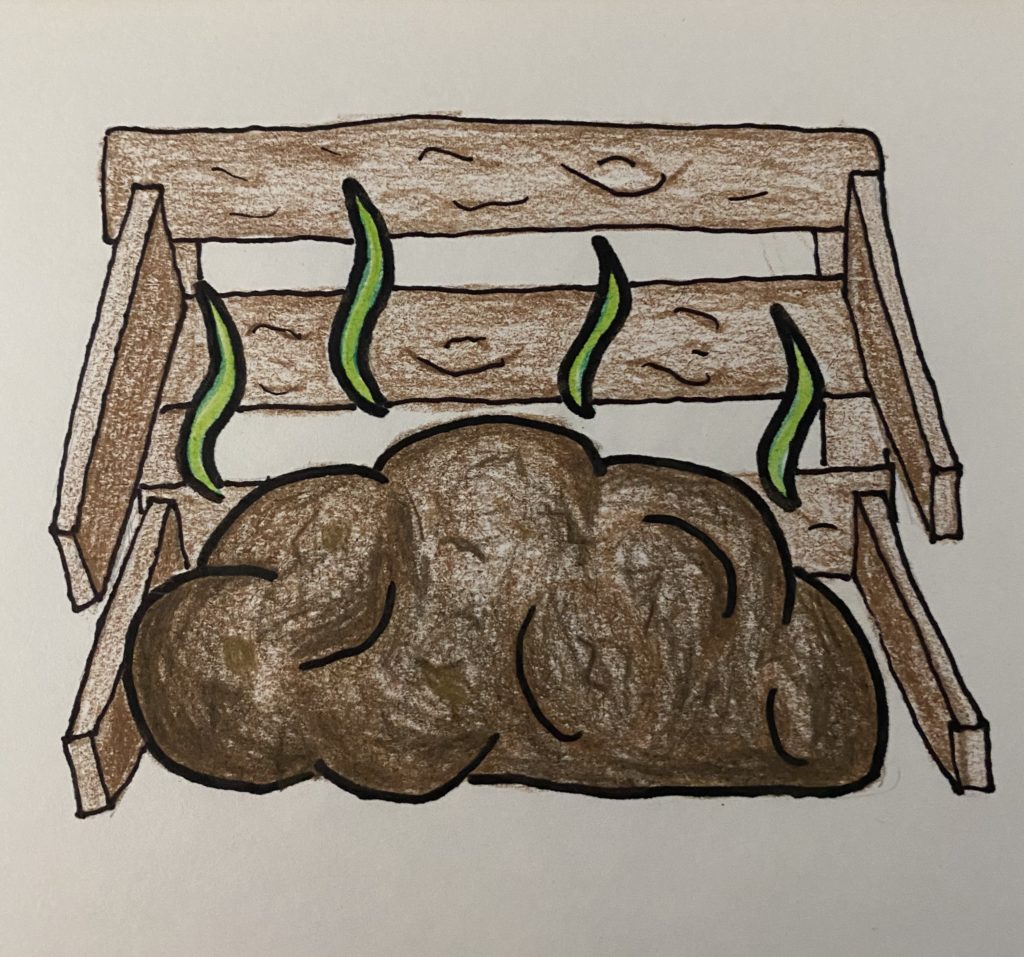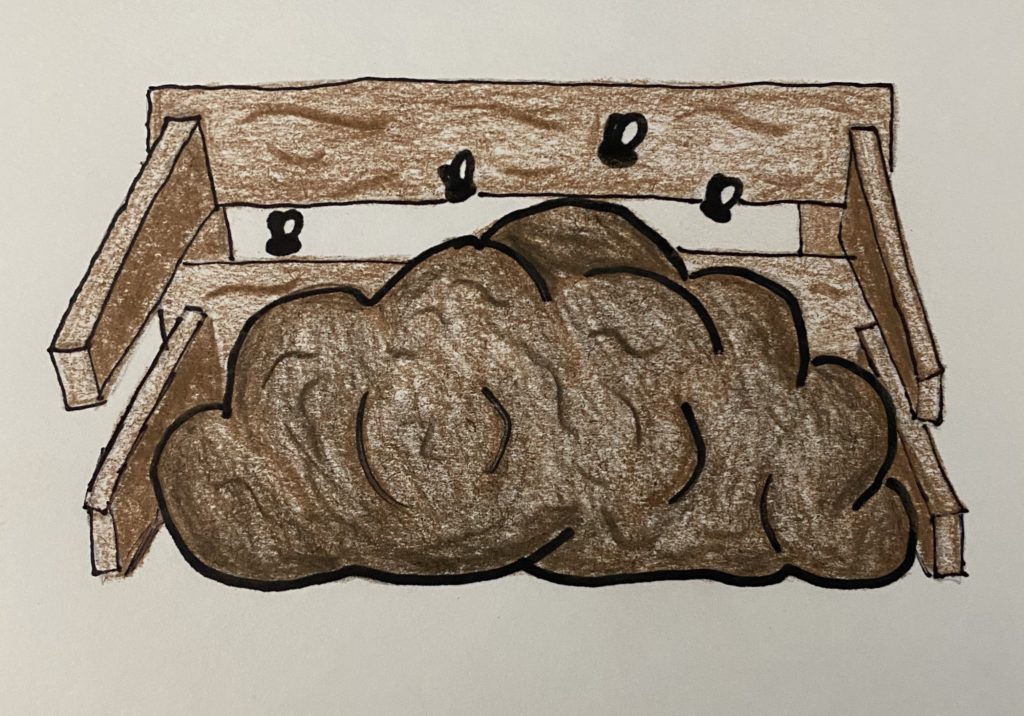A compost pile goes through several different processes that all affect each other, much like a mini-ecosystem. Sometimes, the system can go off-balance and problems can crop up, but these are usually fairly easy to correct. Some of the most common issues you are likely to encounter are:
Bad Odors
Odors are one of the most common issues for compost piles. There are several potential causes, each with a different solution:

- Ammonia smell: Caused by too much nitrogen. Mix carbon-heavy material like dried leaves, straw or shredded newspaper into the pile. Make sure the pile does not get too dry by monitoring moisture levels after adding the extra carbon.
- Putrid or rancid smell: Possible contamination from materials that should not have been added, such as meat or dairy products. Remove items and be more cautious about what is added.
- Rotting or other bad odors: Anaerobic conditions. Mix up material with a pitchfork or shovel to improve airflow.
You may also be able to reduce odors by covering the pile with a burlap cloth, but this does not solve the underlying issue (and may make it worse by blocking additional airflow. Covers can be helpful for other reasons, however, such as retaining heat and moisture, so it is worth considering.
Pile Not Heating Up
There are two likely causes for a lack of heat in the pile:
- Pile too small: Add more material to help insulate the pile and reduce heat loss at the surface. Make sure the pile is kept high; allowing it to spread out will increase surface area and heat loss.
- Too much carbon: Add more nitrogen to the pile. Food scraps and coffee grounds are especially helpful in building up nitrogen levels.
Slow Progress
Progress is most likely slow due to one of the other issues listed here, such as low temperatures or low airflow. Improve general maintenance of the pile by turning it, adding more material, and keeping it moist to keep the microbial population active. Whenever microbes die off due to lack of oxygen, water, or other causes, they must build their populations back up to get the composting process going again.
Flies

Flies are drawn to decaying food, and eggs or larva may already be present in food before it is added. Flies cannot burrow, however, so adding a layer of carbon material or burlap to the top of the pile so that no food is exposed will block their access and prevent them from laying new eggs. Keeping odors low and heat hight through proper maintenance will also reduce the number of flies that will try to colonize the pile.
Other pests (rodents, skunks, raccoons)
It can be difficult to keep larger pests out of your compost pile; rats are small enough to fit through gaps or holes in wire, and raccoons can break into all but the most secure setup. Your best bet is to keep the pile maintained well enough that food starts breaking down early and becomes less desirable for animals looking for a quick meal, and avoiding meats or other items that are especially attractive. You can add a wire lid to your bin to help reduce access, though you must check it regularly to make sure it still fits properly.
We are always happy to help if you have any issues not covered above or any other questions at all! Please feel free to call or email us with the information found on the Contact Us page!
